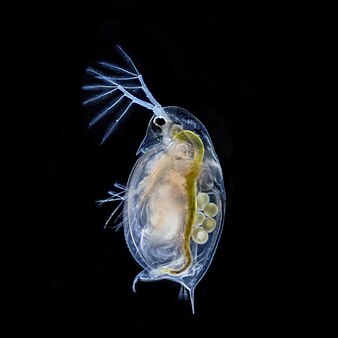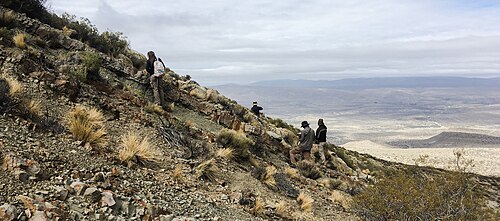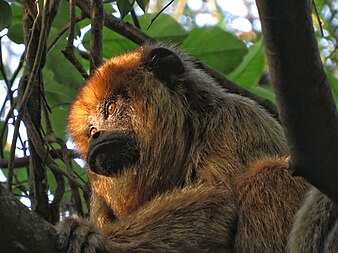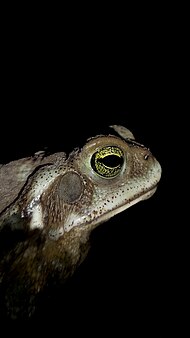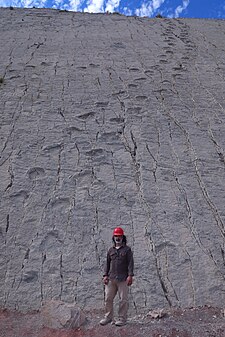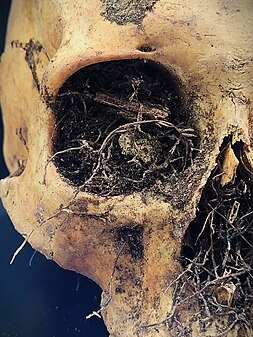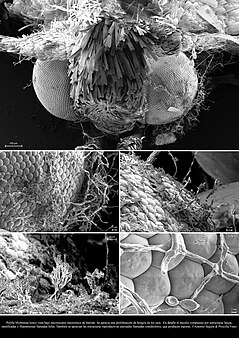Commons:Wiki Science Competition 2023/Winners/Argentina
Argentina · Estonia · Finland · France and Monaco · Indonesia · Ireland · Italy · Malaysia · Nigeria · North Macedonia · Poland · Russia · South Africa · Spain · Switzerland · Ukraine · United States ··· The rest of the World
People in Science · Microscopy images · Non-photographic media · Wildlife & nature · Astronomy images · General category · Image sets ··· Winners
![]() These are the finalists for WSC2023 in Argentina.
These are the finalists for WSC2023 in Argentina.
This country-level selection had a specific national organizer and a national coordination page. 357 files were submitted by several uploaders.
Jury[edit]
- the selection was performed manually.
- coordinator: Fernando Archuby.
- the jurors were:
From the Equipo de Wikimedistas de la Universidad Nacional de La Plata:
- Fernando Archuby
- Marien Béguelin
- Matías Giglio
- María Huarte Bonnet
External jury (New York)
- Luis Pérez Cuesta
Contributions of:
- Escuela Argentina de Fotografía Buenos Aires City)
- Fotógrafo Maxi Oviedo (San Nicolás City)
National winners[edit]
| Microscopy images from Argentina | ||||
National winner |
||||
| Copepods of the genus Boeckella mating. Dark field microscopy. Image taken during COVID19 pandemia. Brandon Antonio Segura Torres & Priscilla Vieto Bonilla |
| |||
Finalist |
Finalist | Finalist | ||
| Mosquito larva seen with dark field and focus tracking. Image obtained during the COVID19 pandemia in Northern Patagonia, Argentina. Brandon Antonio Segura Torres & Priscilla Vieto Bonilla
|
Ascorbic acid (Vitamin C) crystals seen under polarized light. Brandon Antonio Segura Torres & Priscilla Vieto Bonilla
|
Daphnia with parthenogenetic eggs seen with dark field and focus tracking. 400x Brandon Antonio Segura Torres & Priscilla Vieto Bonilla
| ||
| Finalist | Finalist | Finalist | ||
| Mythimna loreyimima moth observed under a scanning electron microscope, digitally colored. A proliferation of Penicillium fungi is visible in the compound eye. Brandon Antonio Segura Torres & Priscilla Vieto Bonilla
|
Ceriodaphnia dubia seen with dark field, ventral view, focus tracking, 400x magnification. Brandon Antonio Segura Torres & Priscilla Vieto Bonilla
|
Entomopathogenic fungi Beauveria bassiana emerging from Tribolium castaneum. Lautaro Preisegger Daysi Espín Sánchez Carla Huarte-Bonnet
| ||
| People in Science images from Argentina | ||||
National winner |
||||
| Researchers and students of the Andean Geological Studies Group (UNS-CONICET) hiking over Early Cretaceous sedimentary rocks of the Neuquén basin, Argentina, among native Patagonian flora. Uplift of these strata took place as they got folded and faulted due to compressive tectonics, inviting weathering and erosion to the craft of modern landscape.. Valentalf |
| |||
Finalist |
Finalist | Finalist | ||
| The paleontologists Rocío Vera and Lucila Fernández, together with the technician Eliana Cimorelli collect a fossil skeleton from Cretaceous rocks. Paleoninja
|
The image shows the excavation and exhumation tasks of human bone remains carried out in graves of contemporary funerary contexts, with scientific forensic objetives. Note the complexity of these tasks given the narrowness and depth of the pit. Romina Clara
|
The paleontologist Pablo Gallina breakes the sandstone to collect a fossil bone included in the rock belonging to the 95 million years old Candeleros Formation in Río Negro Province, Argentina. Paleoninja
| ||
Finalist |
Finalist | Finalist | ||
| A small lizard (Leiosaurus bellii) bites the hand of a paleontologist working in Upper Cretaceous rocks in Río Negro Province, Argentina. Paleoninja
|
he image represents the integration of one of the biologist with her microscope, to achieve something that only the actant (in Latour's terms) researcher+microscope can do. Image obtained from an herpetologic field work at Sierra de la Ventana, Argentina. The biologist is analyzing the blood of turtles captured in situ in order to evaluate their health state. Jäkel.Andrés
|
Paleontologists giving a first look by microscope to small fossils in the field. Paleontological expedition in northern Patagonian beds of late Cretaceous beds in Río Negro Province, Argentina. Paleoninja
| ||
| Wildlife & nature images from Argentina | ||||
National winner |
||||
| Female humming bird of the species Chlorostilbon lucidus also known as glittering-bellied emerald. The species, photographed in northern Argentina, is also common in Bolivia, Uruguay, Paraguay and Brasil. Manuel Jeremias Vedia |
| |||
| Finalist | Finalist | Finalist | ||
| The photograph was taken during a research stay in Belem de Para (Brazil) aimed at studying the places in which the relationships between human beings and the environment takes place in Amazonia. Jäkel.Andrés
|
A male Green Kingfisher (Chloroceryle americana) perched on a branch, seen from the front, observed at the Iberá Provincial Park in Corrientes, Argentina. Ezequiel Ignacio Vera
|
Close-up dorsal view of a specimen of Tenebrio molitor, also known as the mealworm, viewed through a magnifying glass. The insect exhibits clear signs of infection by the entomopathogenic fungus Beauveria bassiana. The surface of the insect's exoskeleton reveals the presence of characteristic structures of the hyaline fungus, such as spores and mycelium. The infective cycle of Beauveria bassiana begins with the adherence of conidia to the insect's cuticle, leading to entry, colonization, and the eventual death of T. molitor. Subsequently, the fungus emerges on the insect's surface and horizontally spreads to other insects, initiating new infective cycles. This image is valuable for illustrating the biology and pathology of the host-fungus relationship and may be of interest in the context of entomology and biological pest control. Photo by Lautaro Preisegger, Daysi Espín Sánchez, and Carla Huarte-Bonnet
| ||
| Finalist | Finalist | Finalist | ||
| A rufous hornero (Furnarius rufus) standing on top of its oven-like nest, at the Iberá National Park (Corrientes, Argentina). Ezequiel Ignacio Vera
|
A female Carayá (Alouatta caraya) portrait. This animal was part of a group observed at the Sendero Carayá in the Iberá National Park, Corrientes, Argentina. Ezequiel Ignacio Vera
|
Detail of the head of the Argentine Toad (Rhinella arenarum) in low clef. Provincia de Buenos Aires, Argentina. Verdesiempreverde
| ||
| Astronomy images from Argentina | ||||
National winner |
||||
| The emission nebula NGC 3324, known as the Gabriela Mistral Nebula, is located about 7,600 light years away, in the southern constellation of Carina.
The image was acquired with a Newtonian telescope, dedicated cooled mono astronomical camera, using narrow band filters (Sii, Ha, Oiii), all mounted on a motorized equatorial mount. Multiple hours of information were acquired for each filter in individual 3-min shots, and 3 mono master stacks were obtained which, when mixed, obtained the color image. This image is the result of selectively filtering the entire visible spectrum of light except the spectral lines of the most abundant elements in emission nebulae, such as doubly ionized Sulfur (Sii), alpha Hydrogen (Ha) and triply ionized oxygen (Oiii). This allows these images to be taken from cities with as much light pollution as Córdoba. The Hubble palette is known as SHO due to the mapping of the Sii signal as red (R), Ha as green (G), and Oiii as blue (B). Date and place of acquisition: April 2020, Córdoba Capital, Córdoba, Argentina. Main equipment: camera: ZWO ASI 1600 mm-pro, telescope: SW Explorer 200pds+SW Coma corrector, equatorial mount: SW EQ6-R-Pro, electronic focuser: ZWO EAF, filter wheel: ZWO 7x2" EFW, Optolong Narrowband Filters. Guiding equipment: guidescope: starguider 60/240 mm, guide camera: ZWO ASI 120mm mini. Total Integration Time: 16.5 h: 160x180” lights Ha, 85x180” lights Oiii, 85x180” lights Sii. Calibration images: 100 darks, 100 dark-flats, 100 flats per filter. Softwares used: SharpCap 3.2, SGP 3.1, PHD2, Pixinsight 1.8.8 and Photoshop. English: Astrophotography of the NGC 3324 nebula in narrowband technique and Hubble palette (SHO) Cappellettiariel |
| |||
| Finalist | Finalist | Finalist | ||
| The emission nebula NGC 6188, which resembles two dragons, is located about 4,000 light years away, in the constellation Ara, only visible from the Southern Hemisphere.
The image was acquired with a Newtonian telescope, dedicated cooled mono astronomical camera, using narrow band filters (Sii, Ha, Oiii), all mounted on a motorized equatorial mount. 3.5 h of information were acquired for each filter in 3-min shots, and 3 mono master stacks were obtained, which when mixed yielded the color image. This image is the result of selectively filtering the entire visible spectrum of light except the spectral lines of the most abundant elements in emission nebulae, such as doubly ionized Sulfur (Sii), alpha Hydrogen (Ha) and triply ionized oxygen (Oiii). This allows these images to be taken from cities with as much light pollution as Córdoba. The Hubble palette is known as SHO due to the mapping of the Sii signal as red (R), Ha as green (G), and Oiii as blue (B). Date and place of acquisition: July 2020, Córdoba Capital, Córdoba, Argentina. Main equipment: camera: ZWO ASI 1600 mm-pro, telescope: SW Explorer 250pds+SW Coma corrector, equatorial mount: SW EQ6-R-Pro, electronic focuser: ZWO EAF, filter wheel: ZWO 7x2" EFW, Optolong Narrowband Filters. Guiding equipment: guidescope: starguider 60/240 mm, guide camera: ZWO ASI 120mm mini. Total Integration Time: 10.55 h: 70x180” lights Sii, 71x180” lights Ha, 70x180” lights Oiii. Calibration images: 100 darks, 50 flats per filter. Softwares used: SharpCap 3.2, SGP 3.1, PHD2, Pixinsight 1.8.8 and Photoshop. English: Astrophotography of the NGC6188 nebula in narrowband technique and Hubble palette (SHO). Cappellettiariel
|
With the camera lens facing east, the panoramic view of this light pollution-free sky reveals an almost perfect firmament between the Pleiades to Canopus, Orion rising in the middle and Sirius looming behind the southernmost mountain. It is the crown of the small point of light that comes from a small town called Ampimpa, where one of the first astronomical observatories in the region was established. The photo is taken 11km from the place, on the outskirts of a city in Tucumán Province called Amaicha del Valle. Valemops
|
In this wide-field 1x2 mosaic we can see NGC 3576 (Statue of Liberty Nebula) in the lower left margin, the star cluster NGC 3532 (Whishing Well) in the upper left margin, and the Great Carina Nebula (NGC 3372) in the center, in the upper right margin the Gabriela Mistral Nebula (NGC 3324) and the Gem star cluster (NGC 3293).
Date and place of acquisition: April 2022, Córdoba Capital, Córdoba, Argentina. Main equipment: camera: ZWO ASI 1600 mm-pro, telescope: Askar ACL200, Equatorial mount: SW EQ6-R-Pro, electronic focuser: ZWO EAF, filter wheel: ZWO 7x2" EFW, Optolong narrowband filters Guiding equipment: guidescope: hercules 32/130 mm, guide camera: ZWO ASI 120mm mini. Total integration time of 1x2 Mosaic: 25.4 h: Tile 1: 120x180” lights Ha, 60x180” lights Oiii, 67x180” lights Sii. Tile 2: 130x180” lights Ha, 65x180” lights Oiii, 65x180” lights Sii. Calibration images: 100 darks, 50dark-flats y 50 flats per filter. Softwares used: SharpCap 3.2, SGP 3.1, PHD2, Pixinsight 1.8.8 and Photoshop.English: From NGC 3576 to NGC 3293 - 1x2 Mosaic in Hubble Palette. Cappellettiariel
| ||
| Finalist | ||||
| The name "Trifid", was coined by astronomer John Herschel, and means "divided into three lobes", it is a nebula of both emission (reddish part) and reflection (blue part), and absorption (dark nebula) at the same time. time. It is approximately 5,500 light years away, located in the constellation of Sagittarius.
The image was acquired with a Newtonian telescope, dedicated cooled mono astronomical camera, using color and luminance (LRGB) filters, all mounted on a motorized equatorial mount. Multiple hours of information were acquired for each filter in individual 2-min shots, and 4 mono master stacks were obtained, which when mixed yielded the color image. For this image, in addition to the LRGB filters, an anti-light pollution filter was used that selectively filters the wavelengths of the main light sources of a city. This, together with the great brightness of the M20 nebula, allows these images to be taken from cities with as much light pollution as Córdoba. Date and place of acquisition: November 2020, Córdoba Capital, Córdoba, Argentina. Main equipment: camera: ZWO ASI 1600 mm-pro, telescope: SW Explorer 250pds+SW Coma corrector, equatorial mount: SW EQ6-R-Pro, electronic focuser: ZWO EAF, filter wheel: ZWO 7x2" EFW, Optolong LRGB and L-Pro Filters. Guiding equipment: guidescope: starguider 60/240 mm, guide camera: ZWO ASI 120mm mini. Total Integration Time: 10.5 h: 164x120” lights L+L-Pro, 50x120” lights R+L-Pro, 50x120” lights G+L-Pro and 50x120” lights B+L-Pro. Calibration images: 50 darks, 50 flats per filter. Softwares used: SharpCap 3.2, SGP 3.1, PHD2, Pixinsight 1.8.8 and Photoshop. English: Astrophotography of M20 nebula in LRGB technique. Cappellettiariel |
| |||
| General category images from Argentina | ||||
National winner |
||||
| View of a human skull with roots in orbits and nasal cavities. The roots are useful in taphonomic studies since they are indicators of the depositional context in which the skull was buried. The skull was unearthed in a cementery in northern Patagonia, Argentina, for scientific purposes. Romina Clara |
| |||
| Finalist | Finalist | Finalist | ||
| The paleontologist Sebastián Apesteguía, paleontologist, standing in front of sauropod dinosaur tracks preserved in rocks of the Upper Cretaceous El Molino Formation, Bolivia, of about 67 Million years. More than 10 thousand dinosaur tracks are visible in Sucre. These trackways were preserved in the Cal Orko fossil bed, Bolivia. Paleoninja
|
The bones of the carnivorous dinosaur Meraxes gigas outcrop from rocks of the Cretaceous Huincul Formation (93 million years old), in Neuquén, Argentina. Meraxes is a carcharodontosaurid, one of the largest known theropod dinosaurs. Paleoninja
|
Right frontal view of a human skull whose orbit and nasal cavity have numerous roots. The roots are useful in taphonomic studies since they are indicators of the depositional context in which the skull was buried. The skull was unearthed in a contemporary cementery placed in northern Patagonia, Argentina, for scientific purposes. Romina Clara
| ||
| Finalist | Finalist | Finalist | ||
| Reconstruction of the skeleton of the fossil herbivorous sphenodontian Priosphenodon avelasi, mounted by Jorge González and exhibited in Cipolletti, Argentina. These reptiles were abundant and lived in an ancient Cretaceous desert placed in northern Patagonia, Argentina. Paleoninja
|
The Abuelas de Plaza de Mayo Civil Association is an Argentine human rights organization whose purpose is to locate and return to their legitimate families all babies and children appropriated by the last military dictatorship (1976-1983), create the conditions to prevent the commission of this crime against humanity and obtain the corresponding punishment for all those responsible. Dianamolerof
|
These sedimentary rocks were once the bottom of a water body during the Cretaceous in Neuquén, Argentina (93 million years). The curious structures are the infill of small caves made in the wet mud by ancient invertebrates, later filled by new mud. Paleoninja
| ||
| Image sets from Argentina | ||||
National winner |
||||
| Development of Ambystoma mexicanum axolotl, the process took a total of 18 days, showcasing all phases including gastrulation, morula, and neurulation. Method: stereoscopic microscopy. Brandon Antonio Segura Torres & Priscilla Vieto Bonilla |
| |||
| Finalist | Finalist | Finalist | ||
| Close-up of the compound eye of Drosophila melanogaster (fruit fly) observed under a scanning electron microscope, digitally colored. Brandon Antonio Segura Torres & Priscilla Vieto Bonilla
|
Mite from the Pheroliodidae family, observed under a scanning electron microscope. Magnification 181x. What appears to be 'wings' is actually a pseudo-stigmatic organ. Brandon Antonio Segura Torres & Priscilla Vieto Bonilla
|
Didymo algae (Didymosphenia geminata) observed under a scanning electron microscope. In the first image, Didymo (the larger one) is seen in valve view surrounded by smaller diatoms. Subsequently, there is an increase in magnification to focus on the raphe and its ornamentations. Finally, the diatom is observed in girdle view. Brandon Antonio Segura Torres & Priscilla Vieto Bonilla
| ||
| Finalist | Finalist | Finalist | ||
| Specimen of Daphnia with autofluorescence observed under a confocal microscope in different channels. This specimen was not stained, allowing the natural fluorescence from its interior, which includes chlorophyll from its diet, to be visualized. Brandon Antonio Segura Torres & Priscilla Vieto Bonilla
|
Filamentous microalgae viewed under four different lighting conditions using an immersion optical microscope: bright field, dark field, polarized light, and polarized light with dark field, respectively. Brandon Antonio Segura Torres & Priscilla Vieto Bonilla
|
Moth of the species Mythimna loreyi with proliferation of Penicillium fungi in its eyes, observed under a scanning electron microscope. Brandon Antonio Segura Torres & Priscilla Vieto Bonilla | ||



